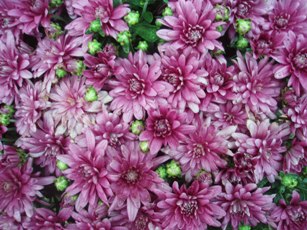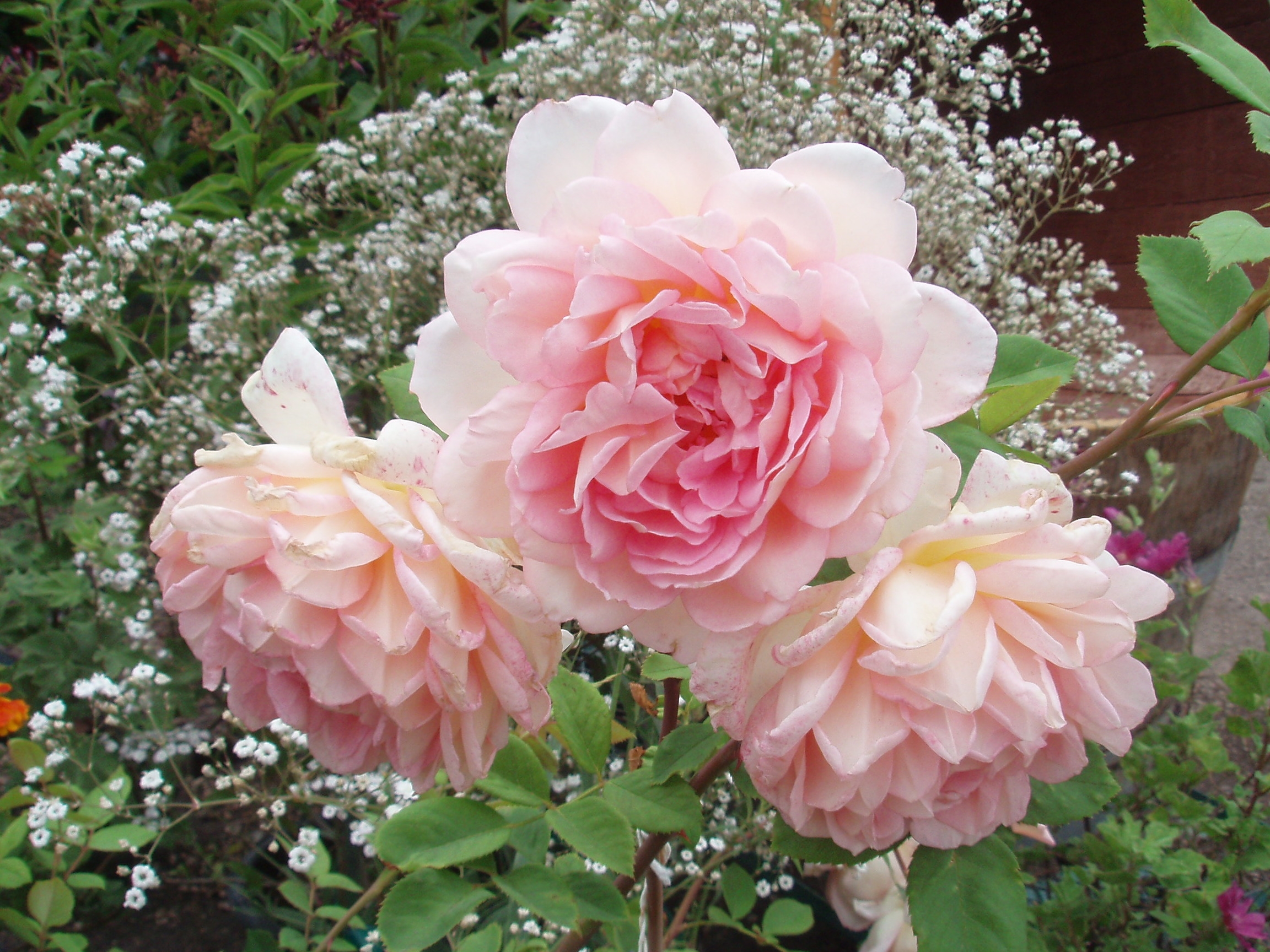I can think of only a handful of perennials that bloom so easily, so prolifically and come in so many colors as the chrysanthemum. Although they will be available throughout fall, the best supplies are often found now. If you need to perk up your tired containers of flower beds, think of the reliable mum.
Actually, their botanical name has been changed to dendranthemum grandiflorum but I never hear anyone use this name. It doesn’t exactly roll off the tongue.
Mums represent the changing season with their bonze, yellow, orange and red tones. Other flower colors include pink, lavender, purple and white to match any color scheme you might have.
Grown for years to flower only in late summer and fall, they are short day plants, setting buds when they receive light for 10 hours and darkness for the other 14 hours of the day. This is why mums bloom in the spring on leggy stems if they are not cut back. And this is how growers manipulate their blooming, adjusting the dark and light periods with shades in the greenhouse so buds will form in any month. They’re nearly constantly available in grocery stores and florists in every season.
At this time of year, garden mums abound. Pick a plant with lots of buds, they bloom only once and won’t set more flowers until next year. Those buds, though, last a long time if you don’t let them dry out. The specific type of plant doesn’t matter since they all have long term growth potential. There is a European mum that produces hundreds of buds and stays relatively small and compact when set out in the garden. If you particularly like one color or form of chrysanthemum, plant it now to enjoy again next year. You never know what the growers might decide to grow next season.
Choose a well-drained, sunny spot to plant them. Like many members of the daisy family, mums don’t tolerate soggy ground. After blooming, trim off the old flowers and cut back plants to within 6-8" of the ground. If you started with 4" pots trim back by half.
Next spring pinch them back whenever growth gets to 8" tall. Keep pinching until July, then allow plants to start forming buds for the traditional fall show. Mums need regular water so plant them in spots where you have other plants with the same water needs.
This fall, add to your mum collection or start a new one. The pungent scent of their leaf reminds us that cooler weather is on the way. And don’t forget to cut some for a bouquet to bring inside the house.


